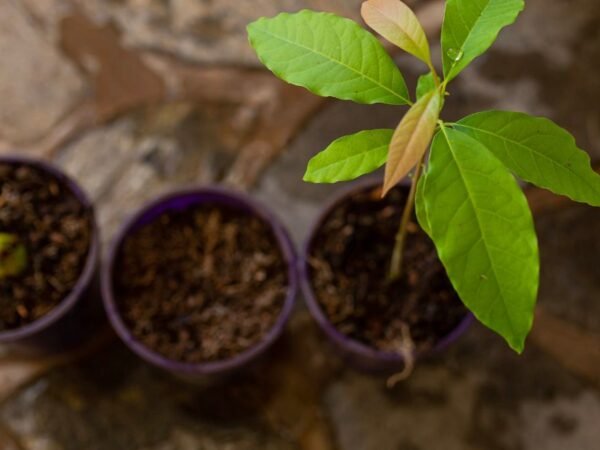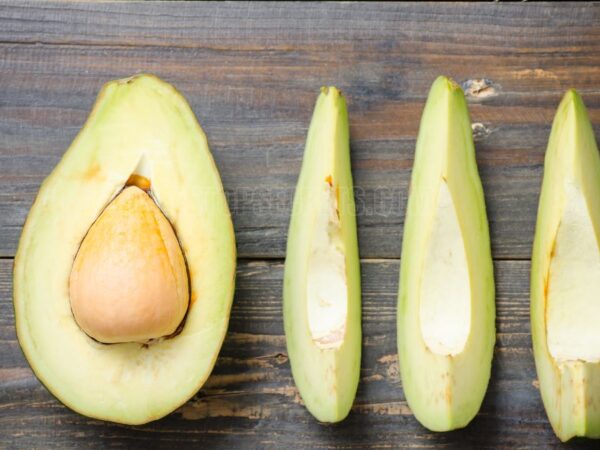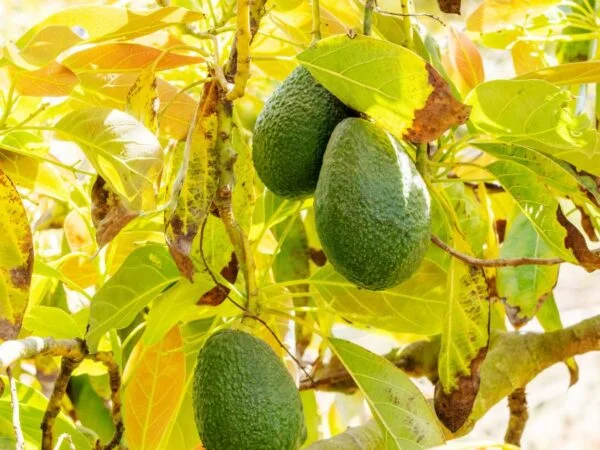Growing your own avocado tree can be incredibly rewarding, but it requires patience. If you've ever wondered, how long does it take to grow an avocado tree? you’re not alone. Many gardeners are eager to enjoy their homegrown avocados but aren’t sure what to expect when it comes to the timeline. In this article, we’ll break down the growth process of avocado trees, offering a detailed look at how long you’ll need to wait before you can harvest your first fruits.
An avocado tree typically takes between 5 to 13 years to grow from a seed to the point where it bears fruit, depending on the conditions and care it receives. If you're growing an avocado tree from a grafted sapling, you can expect it to bear fruit within 3 to 4 years. The time frame varies based on factors like climate, watering habits, and whether the tree is grown indoors or outdoors. A well-cared-for tree in optimal conditions can start producing fruit sooner, but patience is key.
Growing an avocado tree may take time, but it’s well worth the effort! Imagine slicing into a ripe avocado that you grew yourself, right in your backyard. The journey from seed to fruit is exciting, and the anticipation makes the reward even sweeter. Plus, avocado trees make for beautiful additions to your garden or home. Stay with us as we walk you through the steps and tips to ensure your avocado tree grows healthy and strong. You’ll be surprised at how fulfilling it can be to nurture your own tree!
Growing Avocado Trees
Cultivating my avocado tree has been rewarding, leaving me quite often wondering when it'll finally produce those coveted fruits. Here's the lowdown on the timeline for avocado trees to bear fruit and the key factors influencing their growth.
When to Expect Avocados
Avocado trees usually need about three to four years to start producing fruits. But this can vary based on the type of tree. For instance, the popular Hass avocado can begin to bear fruit within this timeframe after planting. Starting from a seed? Well, patience is key—it can take up to ten years, and there’s no guarantee the fruit will be top-notch (Greg Alder's Yard Posts and Home Made by Carmona). Here's a quick glance at the timeline:
| Avocado Variety | Time to Bear Fruit |
|---|---|
| Grafted Trees | 1 year |
| Hass Avocado | 3 - 4 years |
| Seed-Grown Trees | Up to 10 years |
Factors Influencing Growth
Several elements can affect how quickly an avocado tree grows and when it’ll start producing fruit. Here's what you need to keep in mind:
- Tree Size: Bigger, well-established trees generally bear fruit faster than younger, smaller trees.
- Environmental Conditions: Sunlight, temperature, soil quality, and moisture levels are crucial. Avocado trees love a warm climate and well-draining soil.
- Pollination: While avocado trees can self-pollinate, having more than one tree boosts chances for a better fruit set due to cross-pollination.
- Type of Tree: Grafted avocado trees are usually more reliable for early fruit production. Trees grown from seeds? They’re the wild card—taking longer and producing unpredictable results (Home Made by Carmona).
By keeping these factors in check, I can increase my odds of munching on homegrown avocados sooner rather than later. So, let’s get growing!
Growing Avocado Seeds
Growing an avocado from a seed can be a rewarding and fulfilling experience. Let's break down how to get those little green gems sprouting in no time—and keep it fun and easy.
Getting Started
First things first, grab an avocado, make some tasty guac, and save the stone. Rinse off any green goop—trust me, your future plant will thank you. Now for the toothpick trick: stick three of them into the fat end to create a mini tripod. This lets the seed balance on the rim of a glass of water with just its bottom half taking a dip. Easy peasy, right?
Sunny Spot and Water TLC
Find a sunny spot for your seed's new home—it's all about that lovely light for photosynthesis. Keep an eye on the water level, topping up as needed to keep the bottom wet but not drowning. It's kind of like babysitting, but for a plant. Patience pays off here. You might see roots and shoots after about 8 weeks. It’s like watching a slow-motion miracle (Home Made by Carmona).
When to Expect Results
Here’s the nitty-gritty: you’re looking at 6 to 12 weeks for that first green peek and some baby leaves. Don't rush things. Once your little avocado tree starts showing off its leaves, it's in for the long haul. Expect it to focus on building a solid base for the next couple of years—roots first, party later. Once the groundwork is done, around the three to four-year mark, you might just get to see some blossoms. Fruit usually follows, and that's when the real fun begins (Medium). Here's a quick guide to keep it straight:
| Stage | Duration |
|---|---|
| Germination | 6-12 weeks |
| Vegetative Growth | Up to 2 years |
| Fruiting and Blooming | 3-4 years |
So, with a bit of love, water, and patience, you'll go from seed to a tree that might just reward you with avocados one day. It's all about enjoying every step in the process.
Caring for Avocado Trees: A Personal Guide
Nothing beats picking a ripe avocado from your own tree. But to get there, you've got to give your tree some TLC. Here's how I turn my avocado sapling into a thriving tree ready to bear fruit.
The Sweet Spot for Growth
Avocado trees need certain conditions to stay happy and healthy. Here are the magic ingredients:
- Temperature: Keep it cozy between 60 and 70 degrees Fahrenheit. My tree gets a spot that stays warm without getting blazed by the sun.
- Sunlight: Think bright but gentle light. I place my tree where it enjoys lots of indirect, soft sunlight, steering clear of harsh afternoon rays. This helps with photosynthesis, making sure my tree grows strong.
- Height Check: After a year, my tree's generally between 1 and 4 feet tall. Keeps me in check to see it's on track.
| Factor | Ideal Condition |
|---|---|
| Temperature | 60 - 70°F |
| Sunlight | Bright but indirect light |
| Height After Year 1 | 1 - 4 feet |
Watering and Feeding Your Tree
Watering right is like a love language for your avocado tree. Here's my seasonal breakdown:
- Summer: About two inches of water a week. Keeps roots happy and soil nicely moist.
- Spring and Winter: I cut it to an inch per week. Less thirsty in cooler months.
Good drainage is a must to avoid drowning those roots. I always check the soil - not too wet, not too dry.
| Season | H2O Needs |
|---|---|
| Summer | 2 inches a week |
| Spring/Winter | 1 inch a week |
Nutrients? Essential. I mix in the right nutrients to keep the soil fertile and my tree growing robustly. Regular care ensures my avocado tree stands strong, ready for that bountiful harvest.
Avocado Tree Development
Watching my avocado tree grow has been a wild ride! From sprouting to that first delicious fruit, here’s a peek into the journey of my green buddy.
Growth Stages
After planting the seed, the fun begins. My avocado tree enters the vegetative phase, usually lasting up to two years. In its first year, it can shoot up to anywhere between 1 to 4 feet.
| Growth Stage | Duration | Height Range |
|---|---|---|
| Germination | 6–12 weeks | N/A |
| Vegetative Growth | Up to 2 years | 1–4 feet |
| Flowering and Fruiting | Starts after 2 years | Varies by variety |
Once this initial growth phase is over, the tree starts to bloom and bear fruit. Remember, it’s not just about how tall it gets—roots need love too. My avocado buddy alternates between growing up top and building a strong root system.
Fruiting and Flowering
The day my tree started to flower felt like winning a mini jackpot! But patience is key. It takes another three to four years from that first bloom for the fruit to be fully ripe and ready to eat. The blooming time depends on the variety. After both flowering and fruiting kick off, plenty of sunlight and water ensure my tree stays healthy and happy.
| Stage | Time to Completion |
|---|---|
| Initial Flowering | About 2 years in |
| Fruit Maturation | 3–4 years after flowering |
Knowing these stages helps me keep my avocado tree in tip-top shape, paving the way for homegrown avocado toast in the near future.
Harvesting and Storage
Growing an avocado tree is like raising a kid—nurturing it, watching it grow, and then enjoying the fruits of your labor (literally!). When your avocado babies are ready to pick, knowing when and how to store them is key to savoring their tasty goodness.
When Is an Avocado Ready?
To figure out when your avocados are ready to munch on, you have to play detective. Here are the clues:
| Indicator | What to Look For |
|---|---|
| Color | Skin turns from bright green to a darker shade. |
| Texture | A gentle squeeze should give a little but not be mushy. |
| Stem | A green, healthy stem means it's go time! |
If it feels slightly soft (not like a squishy stress ball), your avocado is ready to become guac or top your toast.
How to Store 'Em
Keeping your avocados in tip-top shape involves a bit of strategy. Here’s how to do it:
- Perfect Temp: Store them at room temp, around 68°F to 72°F (20°C to 22°C). This helps them ripen nicely.
- Cold? Nope: Avoid the fridge until they're ripe; chilling slows the ripening way down. But if they’re already ripe and you're not ready to eat them, pop them in the fridge to keep them from getting too soft.
- Too Hot is a No-Go: Heat can mess with the ripening and the flavor, so keep them out of the sun.
With these tips, you’ll be an avocado guru in no time, enjoying perfect avos from your tree to your table.
Avocado Tree Varieties
So you're ready to dive into the avocado-growing game, huh? Knowing the types of avocado trees can seriously ramp up your fruit-growing game. Every type has its own quirks, favorite growing conditions, and unique flavors. Let's break it down.
Lamb Hass: The Unique One
Lamb Hass avocados are like the chameleons of the avo world. They start off green and turn a darker color as they ripen. But don't just trust your eyes—give it a little squeeze. If it feels soft yet firm, it's ripe (Texas Real Food). Fans love Lamb Hass for its creamy, rich taste. It's usually available later in the season, making it a star in the avocado line-up. It also grows upright, so it's a bit of a space-saver (Texas Real Food). To get that perfect ripeness, keep these avocados at a cozy 68°F to 72°F (20°C to 22°C). Too cold? They'll just sit there, refusing to ripen. Too hot? They'll go mushy and taste off (Texas Real Food). They usually mature from late spring to summer, especially in sunny Southern California (Texas Real Food).
Avocado Varieties You Oughta Know
Here are some other avocado varieties you might wanna consider if you're thinking of starting your own little orchard. Check out this quick rundown:
| Avocado Variety | Time to Bear Fruit | Cool Facts |
|---|---|---|
| Hass | 3-4 years | The OG. Super creamy, rich flavor. |
| Reed | 4 years | Round and smooth. Great for salads. |
| Lamb | 3-4 years | Changes color as it ripens, rich and creamy. |
Most avocado trees need about three to four years to start producing those tasty fruits. But this can change based on the type, where you're growing them, and how you take care of them. Some might drag their feet because of pruning, cold snaps, or just plain stress (Greg Alder). By knowing the 411 on these different types, you'll be way ahead of the game in picking the perfect avocado trees for your garden. So grab your gardening gloves and start growing!
Final Thoughts: How Long to Grow an Avocado Tree? Patience Pays Off!
Growing an avocado tree may require a few years of patience, but the results are rewarding. Whether you start from a seed or purchase a young tree, understanding the growth timeline is crucial to managing expectations. As long as you provide the right care—adequate sunlight, water, and nutrients—your avocado tree will eventually bear delicious fruit. With persistence and the proper guidance, you'll soon be able to enjoy the fruits of your labor, quite literally!
FAQs about "How Long to Grow an Avocado Tree"
Q: How long does it take to grow an avocado tree from seed? A: Growing an avocado tree from seed typically takes around 5 to 13 years to produce fruit. However, even with the proper care, some trees may never bear fruit. For a faster timeline, consider using a grafted avocado tree instead of starting from seed. Q: Can I speed up the process of growing an avocado tree? A: While you can’t drastically speed up the natural growth process, you can encourage faster growth by providing the right environment—lots of sunlight, proper watering, and nutrient-rich soil. Using grafted trees also helps reduce the wait time for fruit. Q: Do avocado trees grown indoors take longer to bear fruit? A: Yes, avocado trees grown indoors may take longer to bear fruit compared to those grown outdoors due to limited sunlight. To help the tree thrive, ensure it gets adequate light and consider moving it outside during warmer months. Q: What’s the best time of year to plant an avocado tree? A: The best time to plant an avocado tree is in the spring, after the last frost. This gives the tree time to establish itself in warm weather, leading to healthier growth and better fruit production. Q: How much space does an avocado tree need to grow? A: Avocado trees need 15 to 20 feet of space when grown outdoors, as they can grow quite large. For indoor plants, choose a dwarf variety and prune regularly to control size.
Image Source: Paid image from CANVA

![How Long to Grow an Avocado Tree? [Find Out Here!] How Long to Grow an Avocado Tree? [Find Out Here!]](https://treestopsecrets.com/wp-content/uploads/2024/05/How-Long-to-Grow-an-Avocado-Tree.jpg)



